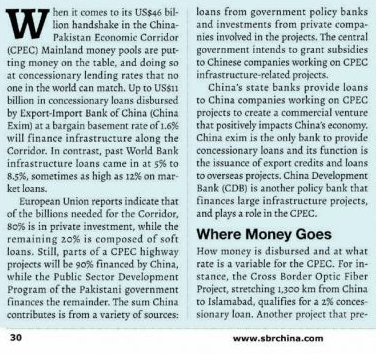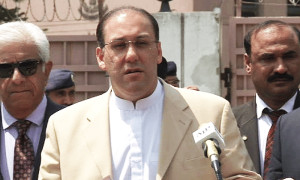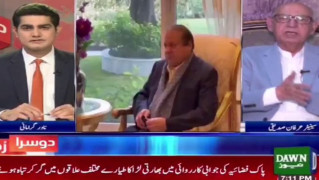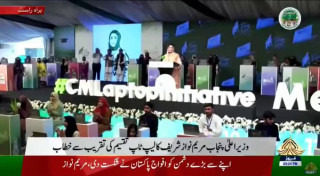RiazHaq
Senator (1k+ posts)
Is China ripping off its all-weather friend Pakistan by charging high interest rates on loans and exorbitant guaranteed returns on investments in China Pakistan Economic Corridor (CPEC) projects? That's a question that is being asked on a frequent basis by Pakistan's friends and foes alike.
While friends of China-Pakistan ties are concerned about an undue burden on Pakistanis, the foes see CPEC as an opportunity to create a lot of fear, uncertainty and doubt about it and its benefits for Pakistan's economy and society. Who's right? Who's wrong? Why? Let's dive into it.

Claims by CPEC Detractors:
Many Western and Indian opponents claim that the cost of CPEC financing will be so high that Pakistan will not be able to bear it. They assert that China is attempting to catch Pakistan in a debt trap from which the country will not be able to escape, eventually turning it into a Chinese colony. The financing costs for Chinese loans and investments they claim are in high teens.
Misguided Pakistani Analysts' View:
Many well-meaning Pakistanis, including serious economists, seem to echo detractors' claims without any serious examination or comparison with prevailing bench-marks. They do not mention how similar projects in other parts of the world are financed and what sort of interest rates and return-on-equity are guaranteed.
CPEC Finance Rates vs Benchmarks:
About two-thirds of Chinese CPEC funding is for power projects while the one-third is for infrastructure projects like roads, rail lines and ports.
The Chinese soft loans for CPEC infrastructure projects carry an interest rate of just 1.6%, far lower than similar loans offered by the World Bank at rates of 3.8% or higher.
Chinese companies investing in Pakistan power sector are getting loans from Chinese banks at commercial interest rates. These loans will be repaid by the Chinese companies from their income from these investments, not by Pakistani taxpayers.
The rate of return guaranteed by Pakistan power regulators to the Chinese power companies is about 17%. Is it too high, as some claim? Let's compare it to the US market considered among the safest investments in the world.
Rate of Return in United States:
The average return on equity for almost 8,000 US firms is 14.49%. The power utility companies – with an average of 10.13% – are on the lower end of the spectrum because they are viewed as less risky investments.
In the United States, rate of return varies significantly from state to state, as each state regulator has exclusive authority to regulate utility operations as they choose.
In Advance Energy Economy (AEE) Power Portal database, which tracks ROE for over 100 investor-owned utilities across the country, the highest allowed ROE belongs to Alabama Power Co., at 13.75% while the lowest belongs to United Illuminating Co. (CT) at 9.15%.
Within the US states, Alabama being seen as relatively less safe for investment, offers 13.75% return. So why is it such a surprise to see Pakistani regulator offer Chinese investors a higher rate of return of 17%?
Growing Infrastructure Gap:
Development of physical infrastructure, including electricity and gas infrastructure, is essential for economic and social development of a country such as Pakistan. China-Pakistan Economic Corridor financing needs to be seen in the context of the large and growing infrastructure gap in Asia that threatens social and economic progress.
Rich countries generally raise funds for infrastructure projects by selling bonds while most developing countries rely on loans from international financial institutions such as the World Bank and the Asian Development Bank to finance infrastructure projects.
The infrastructure financing needs of the developing countries far exceed the capacity of the World Bank and the regional development banks such as ADB to fund such projects. A recent report by the Asian Development Bank warned that there is currently $1.7 trillion infrastructure gap that threatens growth in Asia. The 45 countries surveyed in the ADB report, which covers 2016-2030, are forecast to need investment of $26 trillion over 15 years to maintain growth, cut poverty and deal with climate change.
[TABLE="class: tr-caption-container"]
[TR]
[TD="align: center"]

[/TR]
[TR]
[TD="class: tr-caption, align: center"]Pakistan Country Report in Shanghai Business Review Feb/March 2016[/TD]
[/TR]
[/TABLE]
Summary:
China is financing CPEC projects at rates that are comparable to similar projects elsewhere. Chinese loans for infrastructure projects such as rails, roads and ports are at rates (2% or less) below those (3.8%) offered by the Asian Development Bank and the the World Bank. The rate of return on power project investments under CPEC is 17%, somewhat higher than the 13.75 offered by much safer US state of Alabama.
Development of physical infrastructure, including electricity and gas infrastructure, is essential for economic and social development of a country such as Pakistan. China-Pakistan Economic Corridor financing needs to be seen in the context of the large and growing infrastructure gap in Asia that threatens social and economic progress.
An unrelenting campaign of fear, uncertainty and doubt (FUD) about China-Pakistan Economic Corridor (CPEC) has been unleashed in the media in recent weeks. This strategy harkens back to the aggressive marketing techniques used by the American computer giant IBM in the 1970s to fight competition. Part of the motivation of those engaged in FUD against CPEC appears to be to check China's rise and Pakistan's rise with its friend and neighbor to the north.
As in IBM's case, the greatest fear of the perpetrators of FUD is that CPEC will succeed and lift Pakistan up along with rising China. Their aim is to preserve and protect the current world order created by the Western Powers led by the United States at the end of the second world war. Pakistani government should respond to the FUD campaign against CPEC by countering it with facts and data and increasing transparency in how CPEC projects are being financed, contracted and managed.
Source
Last edited by a moderator:


































